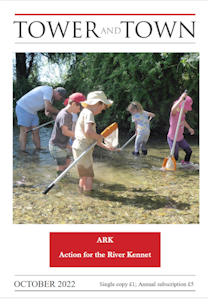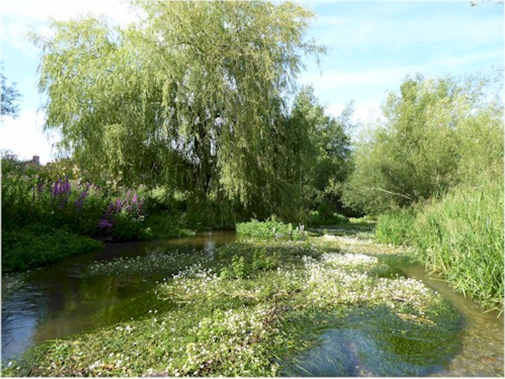

Tower and Town, October 2022 (view the full edition) (view the full edition)Citizen ScienceOne of the most successful Citizen Science projects in the UK is riverfly monitoring. If you've seen someone in the Kennet with a net and a bucket peering into a large white tray on the riverbank, they are likely to be one of our trained volunteer riverfly monitors who are checking for pollution in our rivers. We began establishing sites in Marlborough in 2007 and since then have become the Riverfly Partnership Hub for the Kennet Catchment and now have 64 sites, from Clatford down to Reading. Sites are monitored on a monthly basis, volunteers take a 'kick sample', this gently disturbs the gravel riverbed and the tiny freshwater invertebrates flow into the net. Our riverfly monitors are looking for 8 indicator groups, including specific mayfly larvae, cased and caseless caddis, stoneflies and shrimp. These are the river equivalent of the canary in the mine. They are identified, counted, returned to the river and the count is turned into a score. If a trigger level is breached a protocol is followed and the Environment Agency should attend to investigate further. This system proved itself back in July 2013, when an insecticide found its way into the river and our Elcot Mill monitors picked up this serious pollution incident. Trained volunteers bringing in robust data is also helping us evidence the presence of water voles. Our team of volunteer water vole surveyors are out from spring to autumn surveying for signs of Britain's largest vole, they also log signs of otter. Spending a day wading in the river with likeminded individuals, searching for feeding signs and droppings is very exciting and rewarding, it lets us know these mammals are present even if we are not lucky enough to see them. In the winter brown trout spawn, we stay out of the river where this is happening as if a trout nest is disturbed the eggs will float out of the gravel nest and get predated. The nests are called 'redds' and each year we train volunteers to identify redds. Our Redd Spotters walk a specific riverbank on a fortnightly basis during the spawning season logging new redds at each visit on our Redd App. Without dedicated volunteers we would not be able to collect this valuable data.  Anna Forbes |